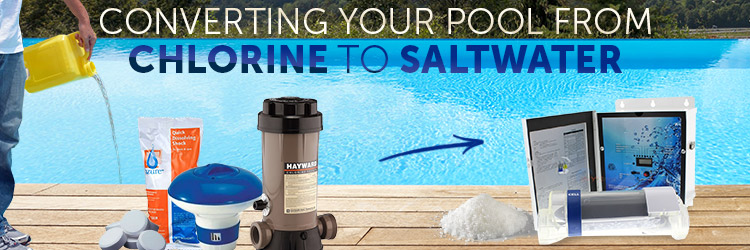In recent years, more and more pool owners are making the switch from traditional chlorine pools to saltwater pools. The benefits of saltwater pools, such as softer water and reduced maintenance, make them an appealing choice for many homeowners. If you are considering changing your pool to a saltwater system, this comprehensive guide will walk you through the process step by step.

Credit: www.discountsaltpool.com
Benefits of Saltwater Pools
Before diving into the conversion process, let’s take a look at some of the key benefits of saltwater pools:
- Softer water that is gentler on the skin and eyes
- Reduced chlorine smell and irritation
- Lower maintenance costs in the long run
- Less frequent need for chemical adjustments
- Environmentally friendly alternative to traditional chlorine pools
Step-by-Step Guide to Changing Your Pool to Saltwater
1. Assess Your Pool
Before making the switch to a saltwater system, it’s important to assess the condition of your pool. Check for any existing damage or leaks that may need to be repaired before the conversion process begins.
2. Purchase A Saltwater Chlorine Generator
The key component of a saltwater pool is the saltwater chlorine generator, which converts salt into chlorine through a process called electrolysis. Make sure to choose a generator that is suitable for the size of your pool.
3. Drain The Pool
Once you have the necessary equipment, it’s time to drain your pool. This step is crucial to ensure that the new saltwater system can be properly installed.
4. Install The Saltwater Chlorine Generator
Follow the manufacturer’s instructions to properly install the saltwater chlorine generator. This may involve mounting the generator to the pool’s filtration system and connecting it to the existing plumbing.
5. Add Salt To The Pool
After the generator is installed, it’s time to add salt to the pool. The amount of salt needed will depend on the size of your pool, so be sure to follow the manufacturer’s recommendations.
6. Balance The Water Chemistry
Once the salt is added, you will need to balance the water chemistry of your pool. Test the water regularly and make any necessary adjustments to ensure that the pH and alkalinity levels are within the recommended range.
7. Start The System
After completing the previous steps, it’s time to start up the saltwater system. Monitor the system closely in the beginning to ensure that everything is functioning correctly.
8. Regular Maintenance
Once your pool has been successfully converted to a saltwater system, it’s important to maintain it properly. Regularly check the salt levels, clean the generator, and monitor the water chemistry to keep your pool in top condition.

Credit: www.inyopools.com
Conclusion
Changing your pool to a saltwater system can be a great way to enjoy softer, more environmentally friendly water while reducing maintenance costs in the long run. By following this comprehensive guide, you can make the switch smoothly and enjoy all the benefits of a saltwater pool.





